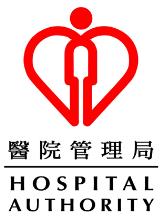
Ref No.
CCIDER-COVID19-002(v1)
HA Central Committee on Infectious Diseases Issue Date
13 March 2020
and Emergency Response (CCIDER)
Review Date
13 March 2023
Interim Recommendation on Clinical Management of
Approved by
CCIDER
Paediatric Patients of Coronavirus Disease 2019
Page
Page 1 of 8
(COVID-19) Infection
Interim Recommendation on Clinical Management of
Paediatric Patients of Coronavirus Disease 2019
(COVID-19) Infection
Version
Effective Date
1
13 March 2020
Document Number
CCIDER-COVID19-002(v1)
Author
HA Task Force on Clinical Management on
Infection (TFCM)
Custodian
Central Committee on Infectious Diseases and
Emergency Response (CCIDER)
Approved by
Central Committee on Infectious Diseases and
Emergency Response (CCIDER)
Approval Date
13 March 2020
Next Review Date
13 March 2023
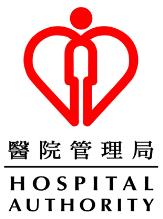
Ref No.
CCIDER-COVID19-002(v1)
HA Central Committee on Infectious Diseases Issue Date
13 March 2020
and Emergency Response (CCIDER)
Review Date
13 March 2023
Interim Recommendation on Clinical Management of
Approved by
CCIDER
Paediatric Patients of Coronavirus Disease 2019
Page
Page 2 of 8
(COVID-19) Infection
Table of Contents
Section
Page
1
Background ...............................................................................................................
3
2
Infection of COVID-19 in paediatrics ............................................................
3
3
Anti-viral treatment ................................................................................................
3
4
Monitoring during treatment ..............................................................................
6
5
Use of Corticosteroids .........................................................................................
7
6
Use of adjunct treatment ....................................................................................
7
7
Psychological support ..........................................................................................
7
8
Release of isolation order ..................................................................................
7
9
References ................................................................................................................
7

Ref No.
CCIDER-COVID19-002(v1)
HA Central Committee on Infectious Diseases Issue Date
13 March 2020
and Emergency Response (CCIDER)
Review Date
13 March 2023
Interim Recommendation on Clinical Management of
Approved by
CCIDER
Paediatric Patients of Coronavirus Disease 2019
Page
Page 3 of 8
(COVID-19) Infection
1.
Background
1.1 For paediatric patients infected with COVID-19, cases reported in the current
literature are mild in clinical severity, and there is no evidence-based treatment
regimen. The present treatment recommendations take reference from the adult
interim management guideline and the WHO interim guideline. Specifically, the
Hong Kong adult interim management guideline from Ad hoc Task Force on
Clinical Management (TFCM) on Infection recommend consideration for specific
anti-novel coronavirus treatment while WHO only recommended supportive
treatment. Both TFCM on Infection and our group recognized that the proposed
regimens are based on evidence extrapolated from research on other
coronaviruses, expert opinion, as well as the availability of therapeutics in Hong
Kong.
2.
Infection of COVID-19 in paediatrics
2.1 Infection with SARS-CoV was much milder in paediatrics when compared to adults,
and from limited information to date appears to be the similar with COVID-19.
3.
Anti-viral treatment
3.1 Taking reference that paediatric infection with SARS-CoV was associated with
more severe disease (although no mortality) in children ≥12 years of age, an
age-stratified approach for specific anti-viral treatment may be considered.
3.2 Age <12 years old and stable clinical condition:
3.2.1
Investigation after admission
(i) CBP D/C, ESR, CRP, LRFT, LDH, ABG (if indicated);
(ii) Chest X-ray (CXR) +/- High Resolution Computed Tomography
(HRCT) of thorax (if indicated);
(iii) Prescription of empirical antibiotics treatment will be at the discretion
of in charge paediatrician;
3.2.2
Close monitor vital signs and organ functions and recognize signs for
clinical deterioration
(i) If clinically stable, continue monitoring as in 4.
(ii) If clinically deteriorated e.g. increase oxygen requirement,
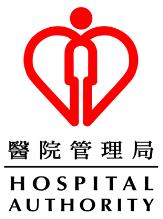
Ref No.
CCIDER-COVID19-002(v1)
HA Central Committee on Infectious Diseases Issue Date
13 March 2020
and Emergency Response (CCIDER)
Review Date
13 March 2023
Interim Recommendation on Clinical Management of
Approved by
CCIDER
Paediatric Patients of Coronavirus Disease 2019
Page
Page 4 of 8
(COVID-19) Infection
progressive CXR infiltrates, extensive pulmonary involvement in
HRCT thorax. Consider anti-viral treatment. Proceed to 3.3.
3.3 Age ≥ 12 years old, Age < 12 year old with unstable clinical condition or severe
pneumonia on admission; clinical deterioration during hospitalization. Anti-viral
treatment may be considered.
3.3.1 Pre-treatment laboratory tests: Blood for: CBC D/C, ESR, CRP, LRFT,
random glucose, clotting profile, LDH, HBsAg, Anti-HCV, Anti-HIV, (+/-
arterial blood gas if indicated);
3.3.2 Chest X-ray +/- High Resolution Computed Tomography of thorax (if
indicated);
3.3.3 Baseline Electrocardiogram (if pre-existing cardiac abnormalities or
disease). For patients with underlying pre-existing cardiac disorders,
follow-up monitoring of the cardiac condition is recommended;
3.3.4 Consider specific treatment when the diagnosis of COVID-19 is made:
(i) Kaletra (Lopinavir / Ritonavir) BD for 14 days
Plus or minus
(ii) Interferon beta-1b* (Betaferon) 8 million IU (equivalent to
250micrograms) subcutaneous (SC) every alternate day for 3 doses
{i.e. on D 1-2, D2-3 & D5-6}
*Interferon beta-1b not licensed for <12 year old
To achieve adequate efficacy, no dose titration is recommended in
treatment of COVID-19 infection. However patient should be closely
monitored for severe side effects.
3.3.5 Dosage of Kaletra (Lopinavir/Ritonavir, LPV/r):
(i)
Do not administer Kaletra to neonates before postmenstrual age of 42
weeks and a postnatal age of at least 14 days
(ii) Three preparations available in HA:
Oral solution: [Kaletra] Lopinavir 80 mg/ml and ritonavir 20 mg/ml
Reserve syrup formulation of Kaletra for patients in PICU or
patients with swallowing difficulty.
Tablets: (LPV/r tablets must be swallowed whole. Do not crush or split
tablets)
[Kaletra] Lopinavir 200 mg/ritonavir 50 mg
[Kaletra] Lopinavir 100 mg/ritonavir 25 mg
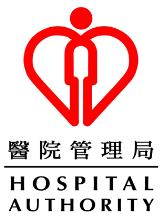
Ref No.
CCIDER-COVID19-002(v1)
HA Central Committee on Infectious Diseases Issue Date
13 March 2020
and Emergency Response (CCIDER)
Review Date
13 March 2023
Interim Recommendation on Clinical Management of
Approved by
CCIDER
Paediatric Patients of Coronavirus Disease 2019
Page
Page 5 of 8
(COVID-19) Infection
(iii) Dosage:
Infant (Aged 14 Days–12 Months) Dose:
LPV/r 300 mg/75 mg per m2 BD. This approximates LPV/r 16
mg/4 mg (both per kg) BD.
Child and Adolescent Dose (Aged >12 Months to 18 Years):
LPV/r 300 mg/75 mg per m2 BD (maximum dose LPV/r 400
mg/100 mg BD).
For patients weighing <15 kg, this approximates LPV/r 13 mg/3.25
mg (both per kg) BD.
For patients weighing ≥15 kg to 45 kg, this dose approximates
LPV/r 11 mg/2.75 mg (both per kg) BD.
3.3.6 Omission of Interferon beta-1b:
(i) To omit the remaining dose of Interferon beta-1b when the symptom
onset is approaching 7 days, e.g. if the patient presents on day 6 of
symptoms onset, only one dose of interferon should be given;
(ii) If the patient presents with symptoms more than 7 days, only Kaletra
should be given.
3.3.7 Pre-treatment check-list:
(i) Check presence of any drug interaction with concomitant medications
(especially with ritonavir);
(ii) Pregnancy test for adolescent girls before initiating interferon
(contraindication);
(iii) Obtain consent for treatment:
Unlicensed indication and the treatment is experimental, treatment
may improve or worsen infection,
The patient and/or parents should be explained on the side effects of
treatments,
Contraindications:
Interferon beta-1b: history of hypersensitivity to interferon beta,
albumin; pregnancy, decompensated liver disease, current severe
depression and/or suicidal ideation
Kaletra: history of hypersensitivity to Lopinavir, Ritonavir. Avoid in
patients with congenital long QT syndrome and cautious use in
patients using other drugs that prolong QT interval.
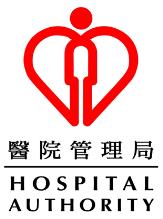
Ref No.
CCIDER-COVID19-002(v1)
HA Central Committee on Infectious Diseases Issue Date
13 March 2020
and Emergency Response (CCIDER)
Review Date
13 March 2023
Interim Recommendation on Clinical Management of
Approved by
CCIDER
Paediatric Patients of Coronavirus Disease 2019
Page
Page 6 of 8
(COVID-19) Infection
4.
Monitoring during treatment
4.1 Blood for CBP D/C, LRFT, LDH, CRP
4.2 Stool for RT-PCR nCoV-2019 if having GI symptoms
4.3 Repeat NPS + Throat swab (pooled specimens) OR NPA for RT-PCR COVID-19
(release of isolation order requires 2 negative specimens taken 24 hours apart).
4.4 2 negative stool specimens for RT-PCR COVID-19 are required for release of
isolation order if the initial specimen(s) on admission tested positive.
4.5 Side effects from treatment.
4.5.1 Interferon beta-1b:
Most frequently observed side effects are a flu-like symptom complex e.g.
fever, chills, arthralgia, malaise, sweating, headache, or myalgia; which is
mainly due to the pharmacological effects of the medicinal product, and
injection site reactions. Other side effects include neutropenia,
thrombocytopenia, hepatotoxicity, thyroid dysfunction and drug-induced
lupus. Severe adverse reactions manifested as acute anaphylaxis and
psychiatric disorders were also reported.
4.5.2 Kaletra:
(i) Most common side effects include gastrointestinal upset (diarrhea, nausea
and vomiting), liver function derangement, hypertriglyceridemia and
hypercholesterolemia. Serious adverse reaction including prolonged QT
interval, torsade de pointes and anaphylaxis reaction.
(ii) KALETRA oral solution contains approximately 42% (v/v) ethanol and
approximately 15% (w/v) propylene glycol. Ethanol competitively inhibits
propylene glycol metabolism, which may lead to propylene glycol toxicity
due to impaired elimination in neonates. In neonates and infants 14 days to
6 months of age, especially for those with renal impairment, the total
amounts of ethanol and propylene glycol delivered from all medications
should be considered to avoid toxicity. They should be monitored for signs
and symptoms of propylene glycol toxicity (e.g., increase in serum
creatinine, seizures, cardiac arrhythmias, lactic acidosis, hyperosmolarity,
stupor, and hemolysis).

Ref No.
CCIDER-COVID19-002(v1)
HA Central Committee on Infectious Diseases Issue Date
13 March 2020
and Emergency Response (CCIDER)
Review Date
13 March 2023
Interim Recommendation on Clinical Management of
Approved by
CCIDER
Paediatric Patients of Coronavirus Disease 2019
Page
Page 7 of 8
(COVID-19) Infection
5.
Use of Corticosteroids
5.1 Routine use of corticosteroid is not recommended;
5.2 Stress dose steroids for refractory septic shock may be used for short period or
other indications at the discretion of the in-charge paediatrician.
6.
Use of adjunct treatment
6.1 There is
no adjunct treatment recommended at this moment.
7.
Psychological support
7.1 The patients are more prone to have symptoms of anxiety and/or depression,
proactive psychological counselling and early intervention are needed.
8.
Release of isolation order
8.1 To liaise with Medical Control Officer (MCO) of Centre for Health Protection (CHP)
for release of isolation order when the patient is clinically ready for discharge and
result of specimens on 4.3 & 4.4 tested negative
9.
References
1. Report of clustering pneumonia of unknown etiology in Wuhan City. Wuhan
Municipal Health Commission, 2019.
http://wjw.wuhan.gov.cn/front/web/showDetail/2019123108989
2. N Zhu, et. al. A Novel Coronavirus from Patients with Pneumonia in China,
2019. NEJM 24 Jan 2020. DOI: 10.1056/NEJMoa2001017.
3. K Shen, et. al. Diagnosis, treatment, and prevention of 2019 novel coronavirus
infection in children: experts’ consensus statement. World Journal of
Paediatrics 29 Jan 2020
. https://doi.org/10.1007/s12519-020-00343-7.
4. The Epidemiological Characteristics of an Outbreak of 2019 Novel Coronavirus
Disease (COVID-19) – China, 2020. Chinese Center for Disease Control and
Prevention. China CDC Weekly; Vol 2 (x): Page 1-10.
5. CM Chu, et al. Role of lopinavir/ritonavir in the treatment of SARS: initial
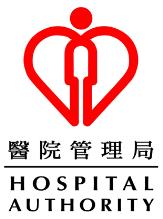
Ref No.
CCIDER-COVID19-002(v1)
HA Central Committee on Infectious Diseases Issue Date
13 March 2020
and Emergency Response (CCIDER)
Review Date
13 March 2023
Interim Recommendation on Clinical Management of
Approved by
CCIDER
Paediatric Patients of Coronavirus Disease 2019
Page
Page 8 of 8
(COVID-19) Infection
virological and clinical findings. Thorax 2004; 59: 252–256.
6. JFW Chan, et. al. Treatment With Lopinavir/Ritonavir or Interferon-β1b
Improves Outcome of MERS CoV Infection in a Nonhuman Primate Model of
Common Marmoset. J Infect Dis 2015; 12; 1904-13.
7. ML Holshue, et. al. First Case of 2019 Novel Coronavirus in the United States.
31 Jan 2020 NEJM. DOI: 10.1056/NEJMoa2001191.
8. 新型冠状病毒肺炎诊疗方案(试行第六版). 国家卫生健康委办公厅, 国家中医
药管理局办公室. 2020 年 2 月 18 日
http://www.nhc.gov.cn/xcs/zhengcwj/202002/8334a8326dd94d329df351d7da8
aefc2/files/b218cfeb1bc54639af227f922bf6b817.pdf.
9. 儿童新型冠状病毒感染诊断、治疗和预防专家共识(第一版). 中华医学会儿科分会.
中华实用儿科临床杂志,2020,35(02):81-85.
http://rs.yiigle.com/yufabiao/1180110.htm
10. Interim Recommendation on Clinical Management of Adult Cases with
Coronavirus Disease 2019 (COVID 19), HA Central Committee on Infectious
Diseases and Emergency Response (CCIDER). Effective since 13 February.
11. Clinical management of severe acute respiratory infection when novel
coronavirus (2019-nCoV) infection is suspected Interim guidance 28 January
2020. WHO.
12. Kaletra drug information
, https://www.rxabbvie.com/pdf/kaletratabpi.pdf
13. Betaferon drug information, summary of product characteristics updated 23 Oct
2019
. https://www.medicines.org.uk/emc/product/1121/smpc/print







